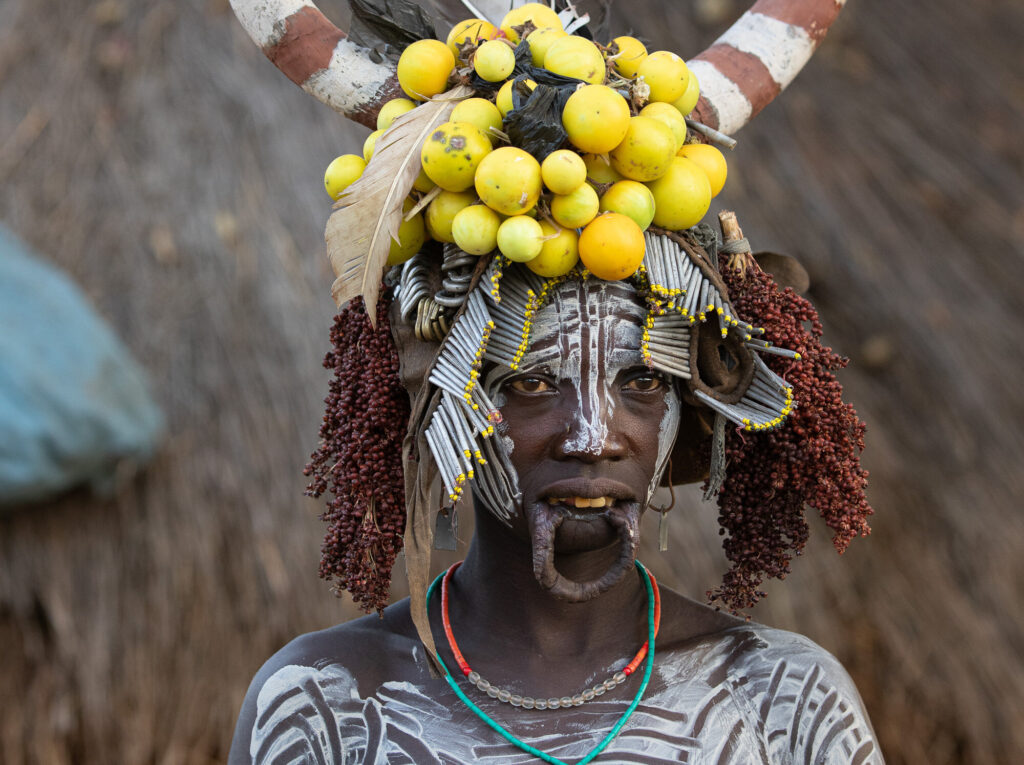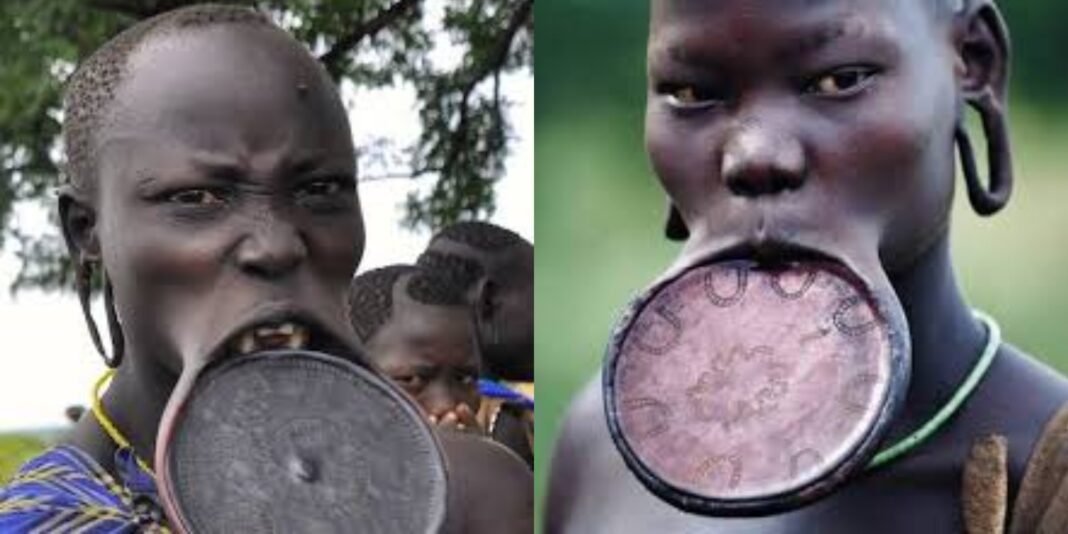Mursi tribe is found in Ethiopia’s Omo Valley region, which is recognised for its cultural richness, with around two dozen tribes living the terrain, which is often inhospitable.
Mursi are a Surmic ethnic group of Ethiopia, near the border with South Sudan. Their native tongue is Mursi, which belongs to the Surmic linguistic family. Their current population is less than 20,000. The Ethiopian government merged them with the Me’en and Suri under the name Surma. Mursi are a pastoralist nomadic community that lives between the Mago and Omo rivers.
They, like the Maasai, Himba, Samburu Fulani, African Pygmy, and Khoisan, have lived cultural lifestyles that have largely survived the test of time. The community that has maintained their proud and rich culture while avoiding outside technology.
You could compare their encounter to a Human zoo, because these folks don’t always welcome strangers. They are, however, among the friendliest people when you work with them, despite the fact that killing other humans, particularly foreigners, is not a huge deal for them.

Also Read – Great Pyramid of Giza, the secret chamber, what is inside?
Facts about the Mursi tribe that you should know
Due to the number of livestock they own per person, they are regarded one of the wealthiest tribes in the Omo valley. As a rite of passage into maturity, men are scarified on their left shoulder. Similar motifs can be found on the chests and arms of women.
Weddings through force or kidnap, as well as marriages by inheritance, are acceptable in the Mursi tribe, while consensual marriages are also popular. Inheritance marriage was widespread among a variety of ethnic groups in Africa, where a widow was taken in by one of the remaining brothers. Apart from Mursi people, the culture is universally despised today, and none or very few individuals practice it.

Men are scarified on the left shoulder as a rite of passage into adulthood. On the chests and arms of women, similar designs can be observed. Men name themselves after the color of their favorite cattle and women after the patterns on their favorite wild animal.
Men are not allowed to marry unless they have won a donga fight (a tough stick fight) to show ladies their power. Their food consists of a dry porridge prepared from sorghum or maize, supplemented with cow’s milk and blood.
Some cattle in the herd have their horns turned inwards and their skin scarred with complex designs, making them look like “prized cows.” Huts, like any other semi-nomadic community in Africa, are fashioned of sticks with grass roofs and are semi-permanent. The huts are used for sleeping, cooking, and dining, and the floors are covered in dried cow skins.
Also Read – 10 Weirdest Discoveries Archaeologists Have Made



